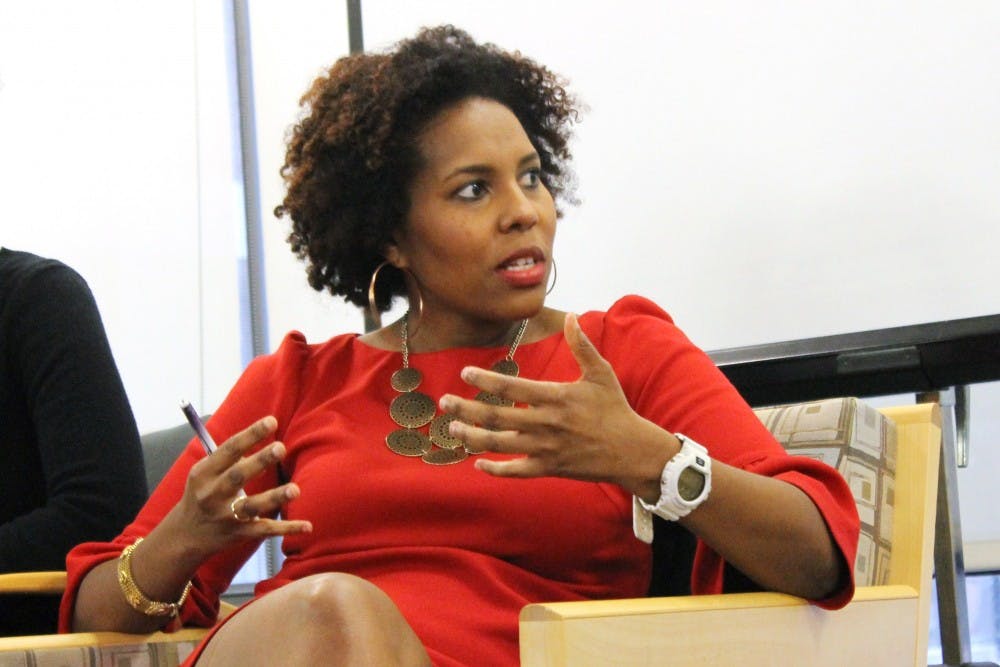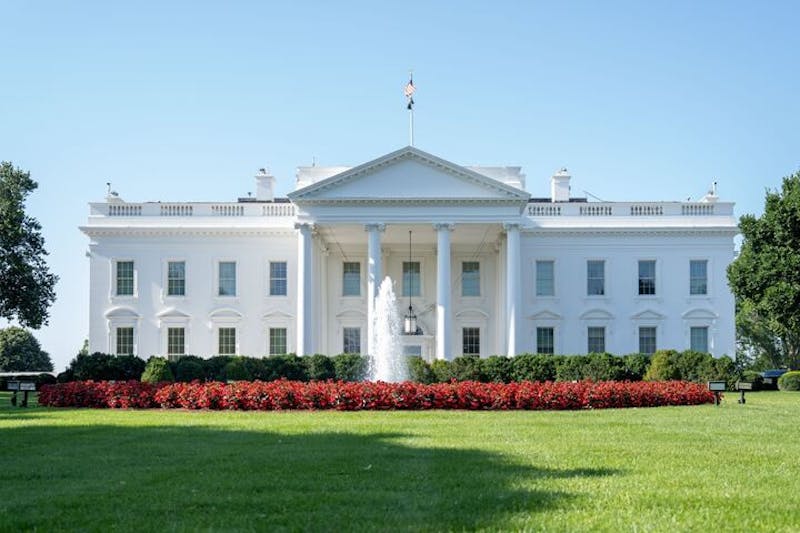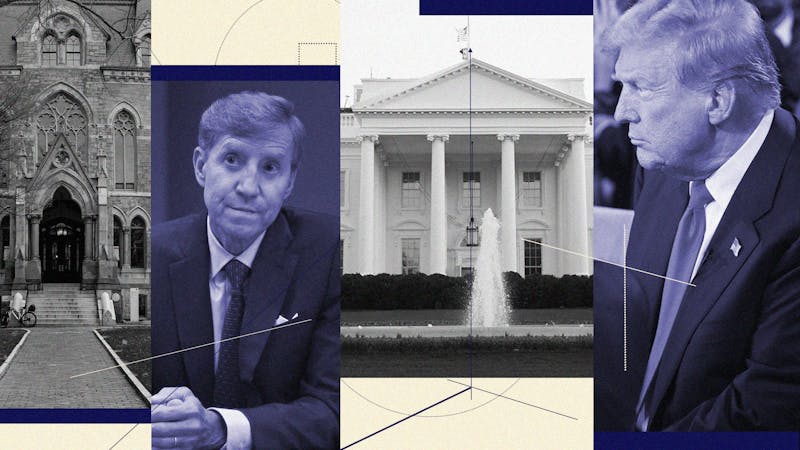
Penn Africana and English Professor Salamishah Tillet, who gave a talk at Penn last semester, recently co-wrote an article for the New York Times that reflects on the disparity between media attention received by black females in comparison to their male counterparts.
Credit: Sophia LeeAiyana Jones, Michael Brown, Rekia Boyd, Eric Garner and Sandra Bland all have one thing in common — each individual died at the hands of police. But only the males have gained the media attention to become household names.
Black female visibility has become a pressing issue across the United States. Much of this is a result of media portrayal of black women, with coverage often focusing on black men and sometimes misrepresenting women.
This summer, Penn Africana Studies and English professor Salamishah Tillet co-wrote an article for The New York Times entitled, “Female Visibility Matters,” reflecting on the disparity between the media attention that black females receive compared to their male counterparts.
“When we talk about lynching, police brutality and mass incarceration, we are almost always talking about African-American men, not women,” Tillet, who was not available to respond to requests for comment, wrote in the Times article.
Even in the classroom, black women sometimes feel they are treated as less than male peers. College sophomore Destiny Bingham recalled that in an Africana Studies class she was enrolled in, which was taught by a male professor, the instructor opted to skip over the section of the course focusing on black women to save time. Once students voiced their opposition, the professor agreed to cover the material, but only briefly. Whereas other topics received a week of attention, the topic regarding black women received one day, Bingham said.
On campus, feelings of exclusion are not uncommon for black women. College junior Nya Wilkins is one of the few women of color in her Panhellenic sorority. “Like everything in life, it has its ups and downs,” she said of sorority life. “One of those downs as a black girl in a Panhellenic sorority is that at times I feel alone because of my racial identification, and I find it difficult to express myself. It was first built for white women. It wasn’t built for me.”
Women of color face the unique struggle of intersectionality, or double discrimination, stemming from both race and gender.
Tillet’s article emphasizes that there have been many black women who are victimized and subjected to violence by the police, yet very few of their names are circulated in the media.
Sandra Bland, a black woman who died in police custody after being pulled over for a traffic violation, was recognized amongst the public after the hashtag #SayHerName blew up on Twitter. Some have critiqued the case and insisted that Bland’s attitude instigated the incident.
“[If she were] any other woman, would you have called it an attitude or would you have said, ‘Yeah, I can see why she was upset or annoyed?’” Penn’s Muslim Chaplain Kameelah Rashad said in an interview.
“Black women have responded to this flattening by making themselves more visible. The #SayHerName campaign — the movement within a movement that helped to elevate the profile of Bland’s case and that of other African-American girls and women — has emerged as a response to this dearth of coverage,” Tillet’s article stated.
In the article, Tillet reminds readers of Rekia Boyd, a young black woman who was shot in the head by a police officer in 2012, raising the question of why her name was not broadly circulated in the media.
“They don’t know Aiyana Jones who was a seven-year-old, who was killed in her house after police entered. She was shot and killed in her sleep,” Rashad said, referring to another case of violence against a black female that has gone relatively unnoticed.
Lack of black female visibility in America is nothing new. This is an issue that is deeply rooted in many social movements.
“[The] abolitionist movement, the suffragette movement, the feminist movement, civil rights — all of those movements, black women have been an integral part of,” Rashad said.
Even the #BlackLivesMatter movement was started by three black women. “It appears everyone benefits from the work and commitment that we put in those movements, but we [black women] don’t,” Rashad said.
“Theft of black women’s labor is rampant on Twitter,” said Leslie Jones, a graduate student who studies intersectionality and media around this issue in the Sociology department.
The lack of proper representation of black women in the media contributes to the perpetuation of disregard for black women in everyday life, Jones said.
“What it means to be a black woman is not some numerical amalgamation of being a white woman and a black man — it’s unique,” Jones said. “The schema that people use to analyze black women in America is so negative and so biased that they look at us in these ways in day-to-day interactions.”
“There is a double consciousness; I want to be considered feminine and I want to be considered a woman, but the stereotypes associated with black women is that we’re harsh in a way that is very masculine,” Rashad said, “They want us to be as quiet and inconspicuous as possible.”
“Being a woman and being black definitely puts you at a very unfair disadvantage in society,” Bingham said. “It is reflected in the way people perceive you.”
“I feel like people tend to look at black women and look at me as if I must fit into one of these archetypes,” Jones said.
She referenced images that have been used historically to categorize black women, such as Jezebel and the black mammy.
“[It’s] what you see on the Aunt Jemima syrup bottle,” Jones said, explaining the black mammy archetype. “[It was] a particular role that comes out of slavery where black women would be the major caretaker for white children.”
This derogatory image of black women has been perpetuated and continued in modern day life. Earlier this week, Miley Cyrus referred to Snoop Dog as her mammy when he brought her brownies during a skit in the MTV Video Music Awards.
The term “mammy” is a word that insults a black woman’s race and gender.
“The mammy archetype in academia is really strong, [people] expect black female professors to be nurturing and not assertive,” Jones said. “That assertiveness is taken as aggressive.”
Another popular archetype that is used to categorize and put down black women is the Jezebel archetype, which stereotypes young, especially light-skinned black women, as overly sexual rather than beautiful or lovable.
”You’ve got the Jezebel stereotype where they [sleep] around with a lot of people and are scandalous,” Bingham said.
However, it seems that white women are not sexualized in such a negative way. “White women are portrayed as more sweet and compliant, and more beautiful in most cases,” Bingham said.
Jones cited an instance where someone wrongfully assumed she was in a service position, which she believes was because of her race and gender. “[It’s like] going to the store, and without anybody asking you if you work there, asking ‘Where are the paper towels?’” Jones said.
Despite feelings of isolation, women of color are not alone.
“Interacting with media that represents your own experiences makes you feel less isolated,” Jones said. She explained that despite being a minority, there are people out there going through similar things.
Rashad recommended for black women and girls who feel overwhelmed to find a mentor who understands what they are going through.
“The best advice I would have is to actively seek out other black women and women of color who will almost intuitively validate and affirm who you are,” Rashad said. “They will encourage you.”
The Daily Pennsylvanian is an independent, student-run newspaper. Please consider making a donation to support the coverage that shapes the University. Your generosity ensures a future of strong journalism at Penn.
DonatePlease note All comments are eligible for publication in The Daily Pennsylvanian.







